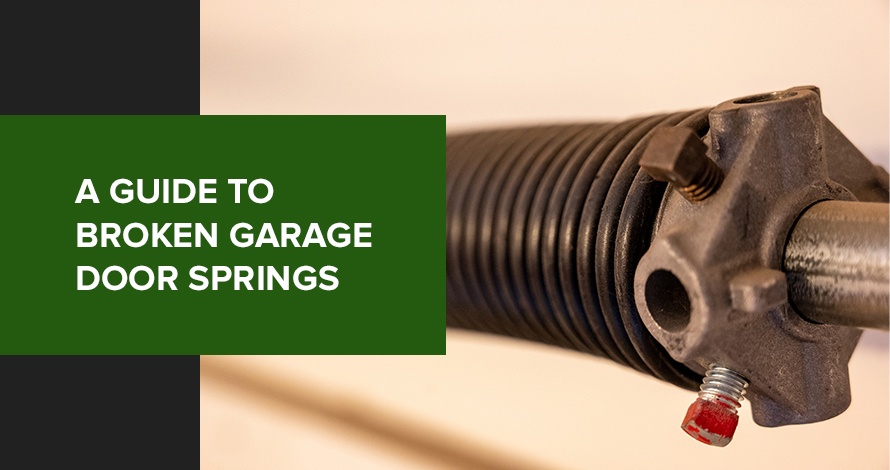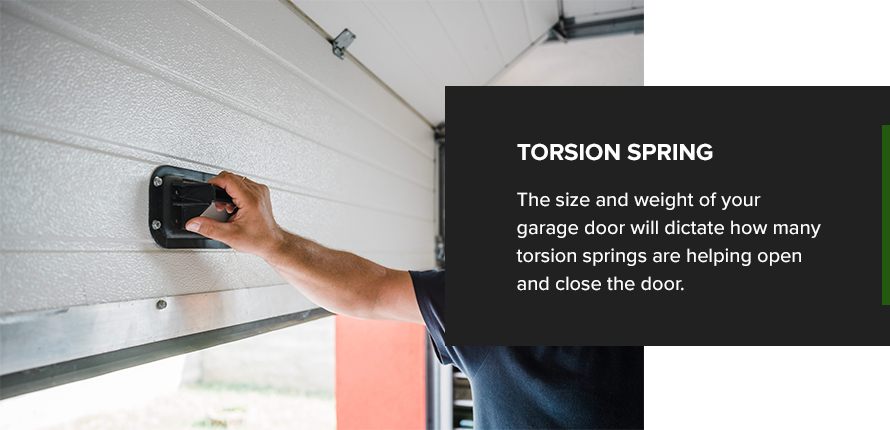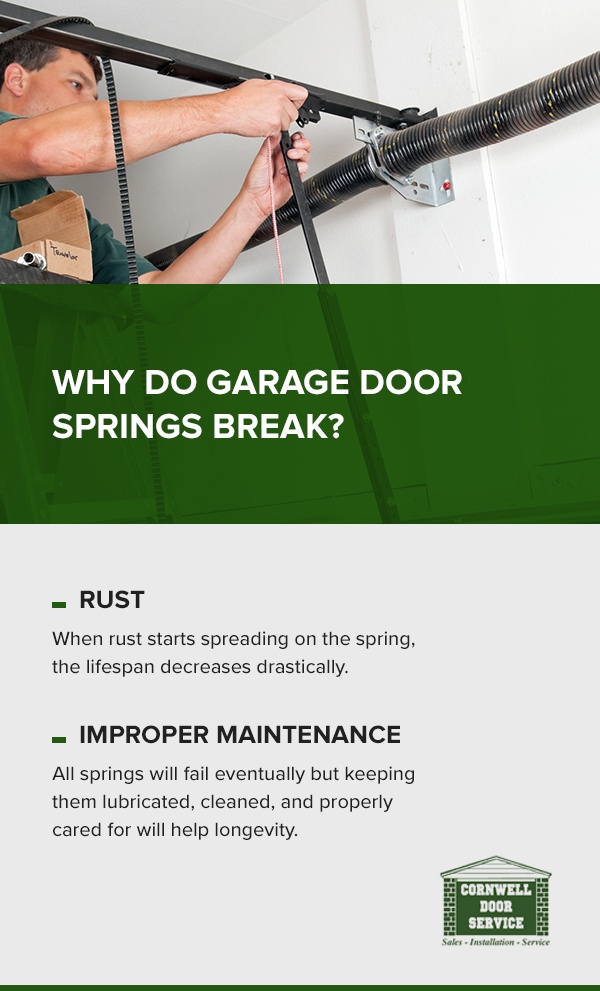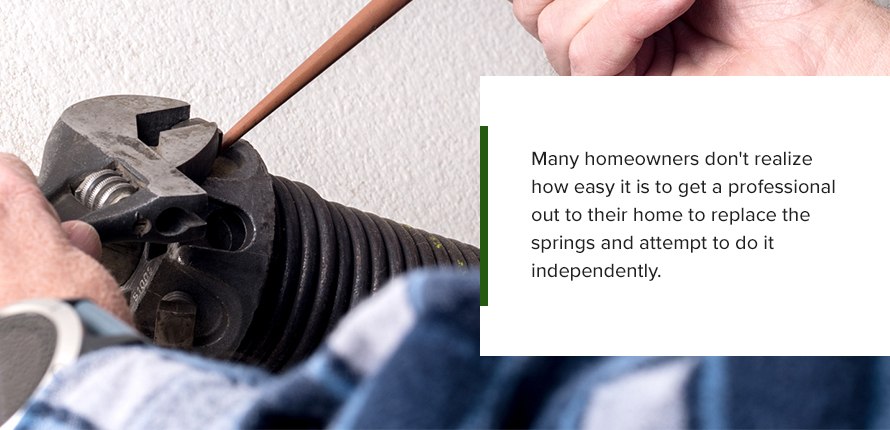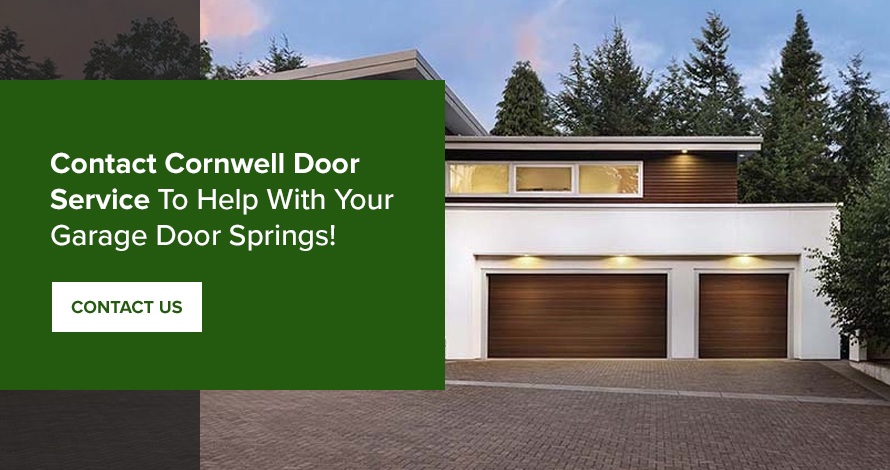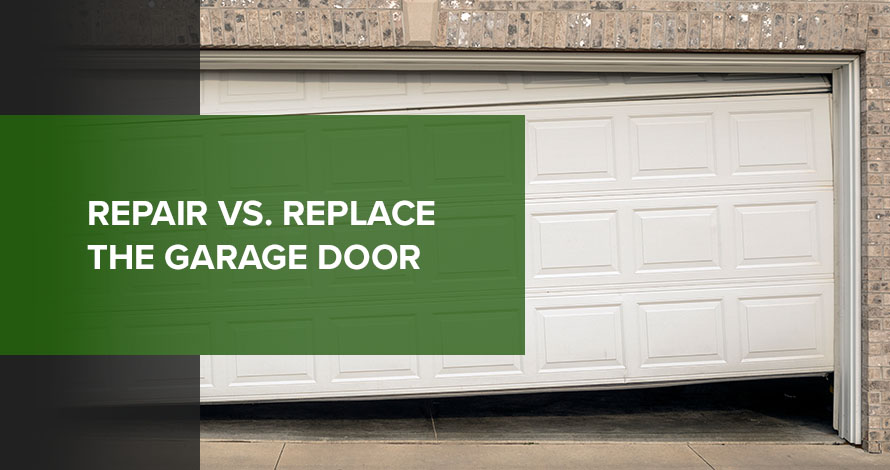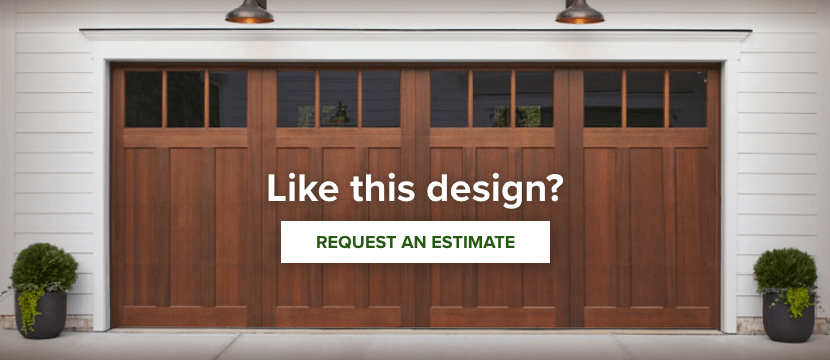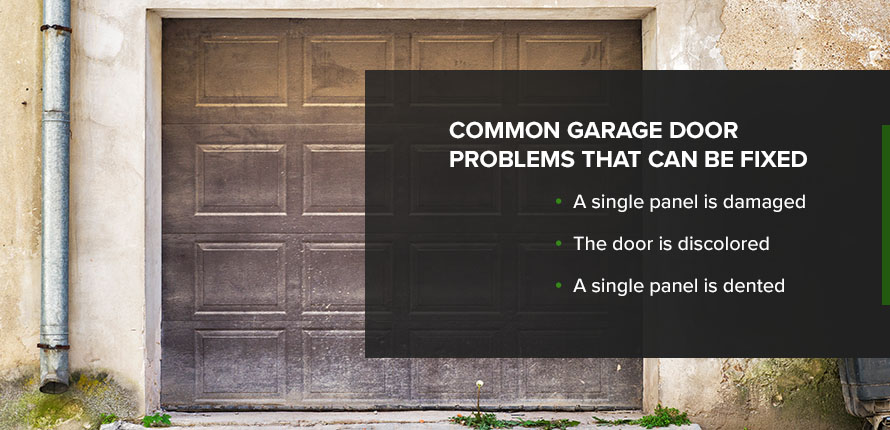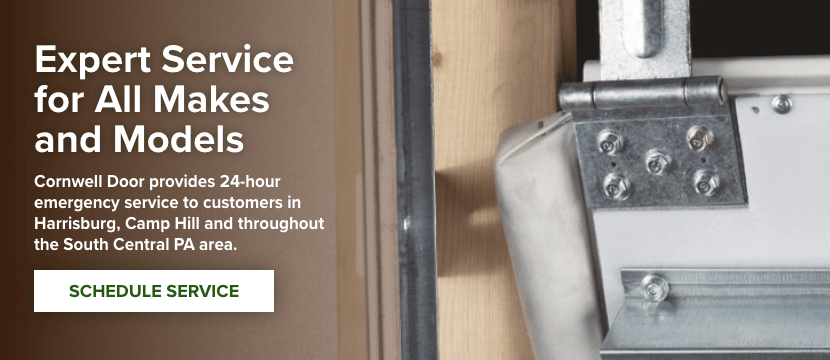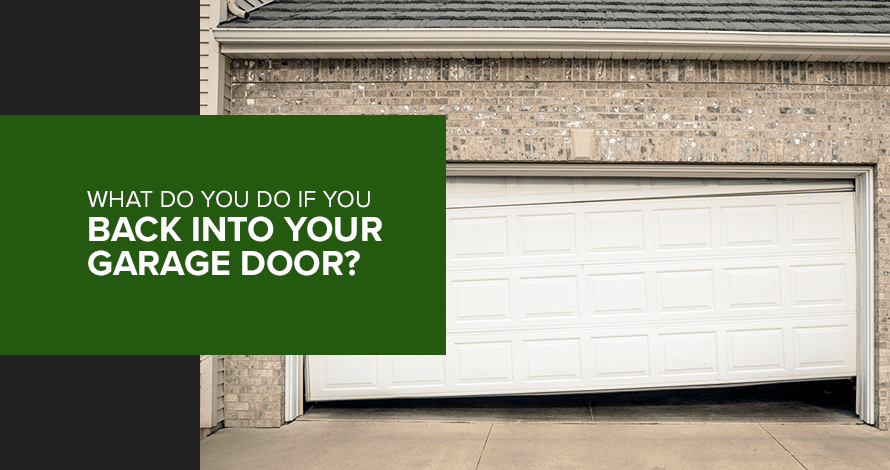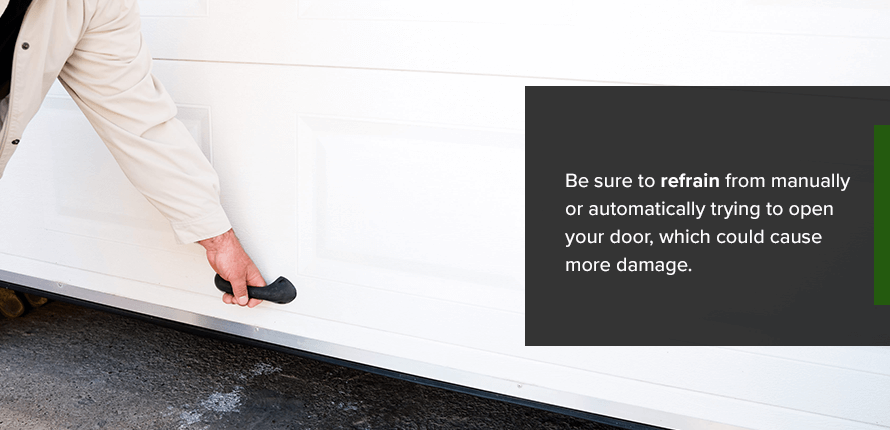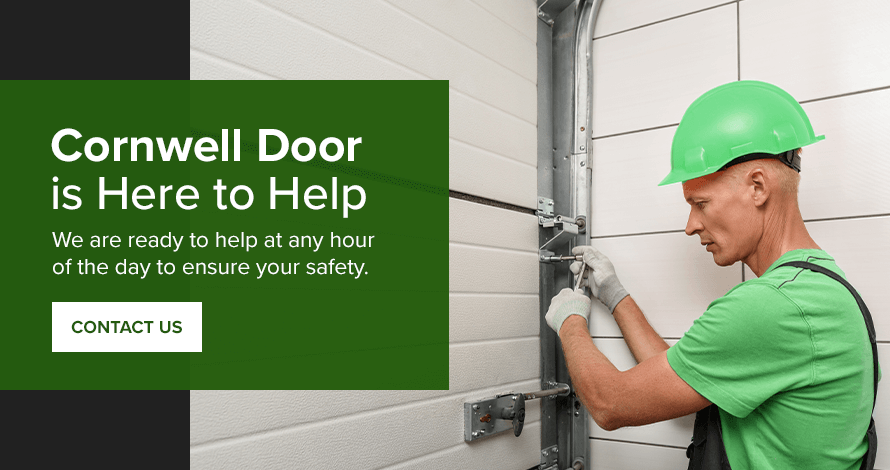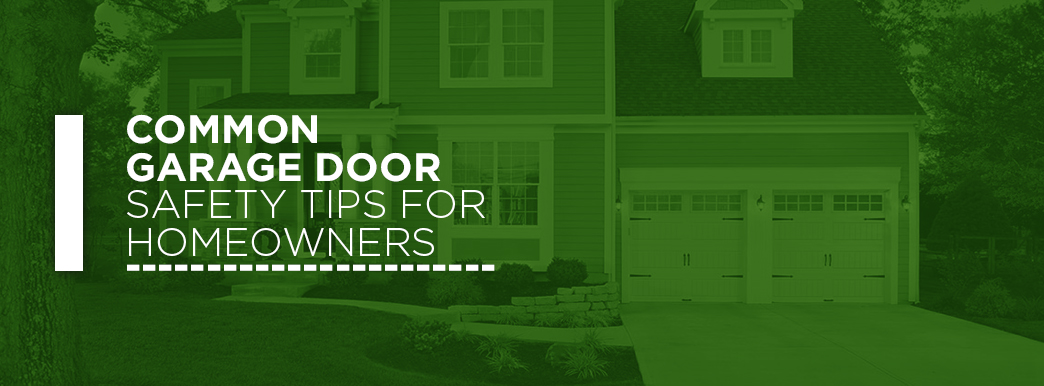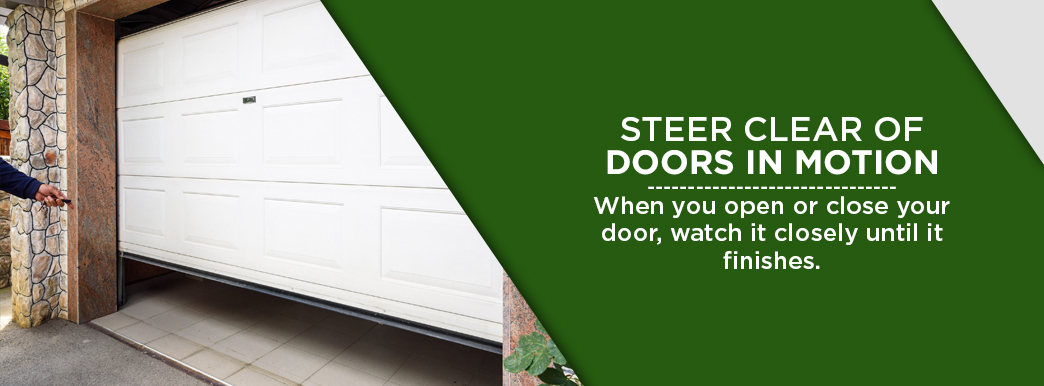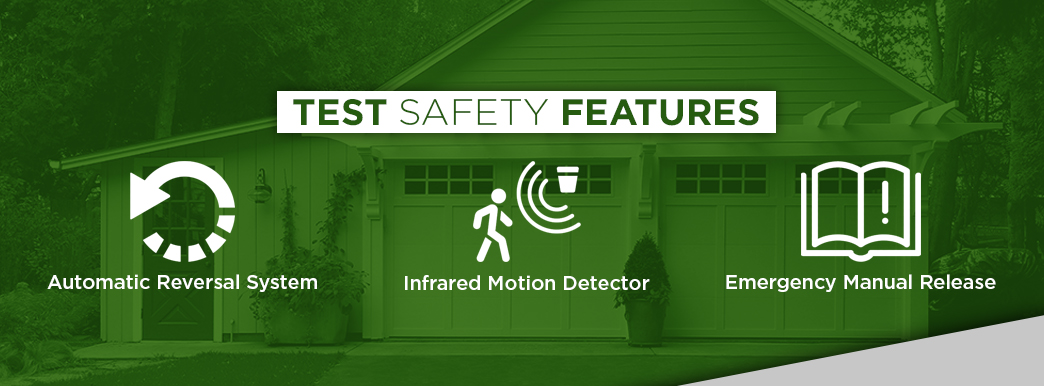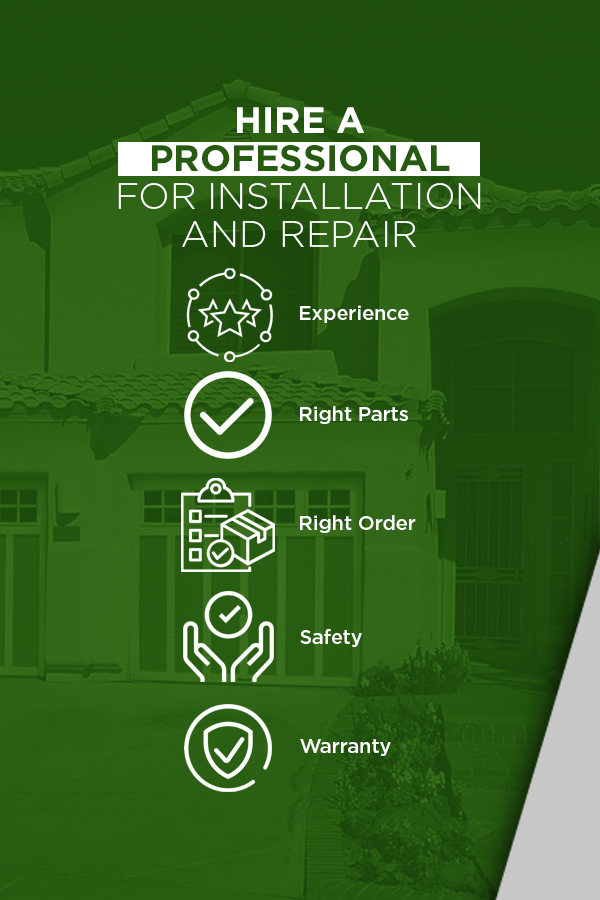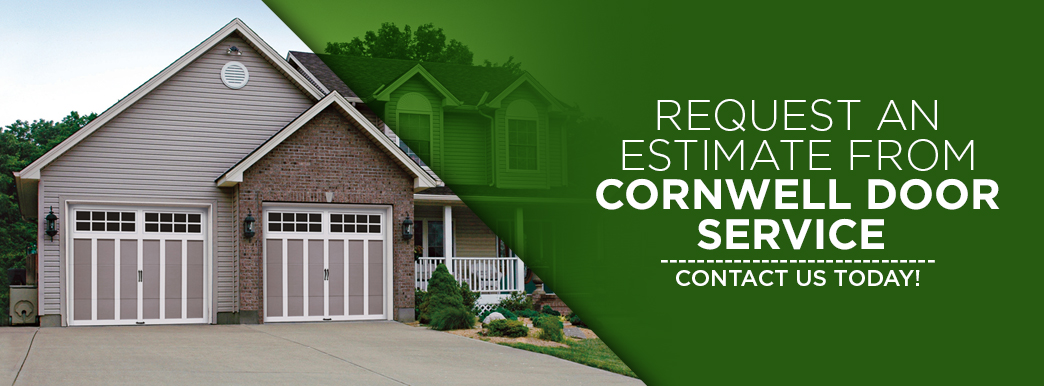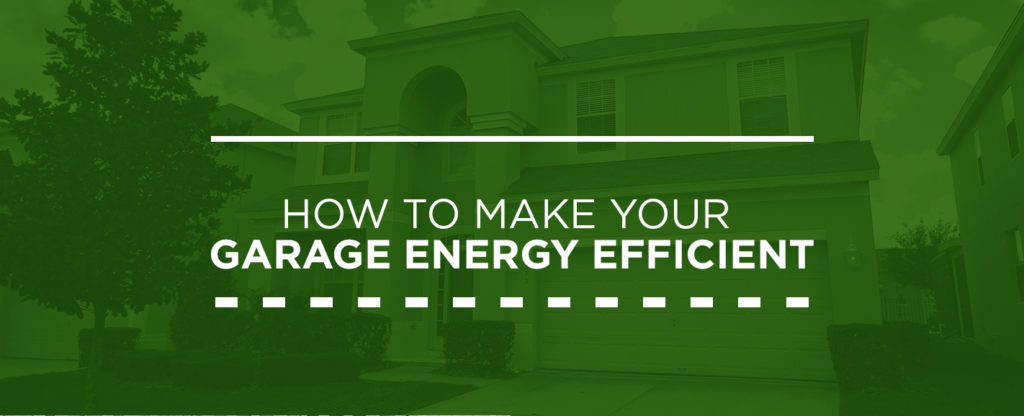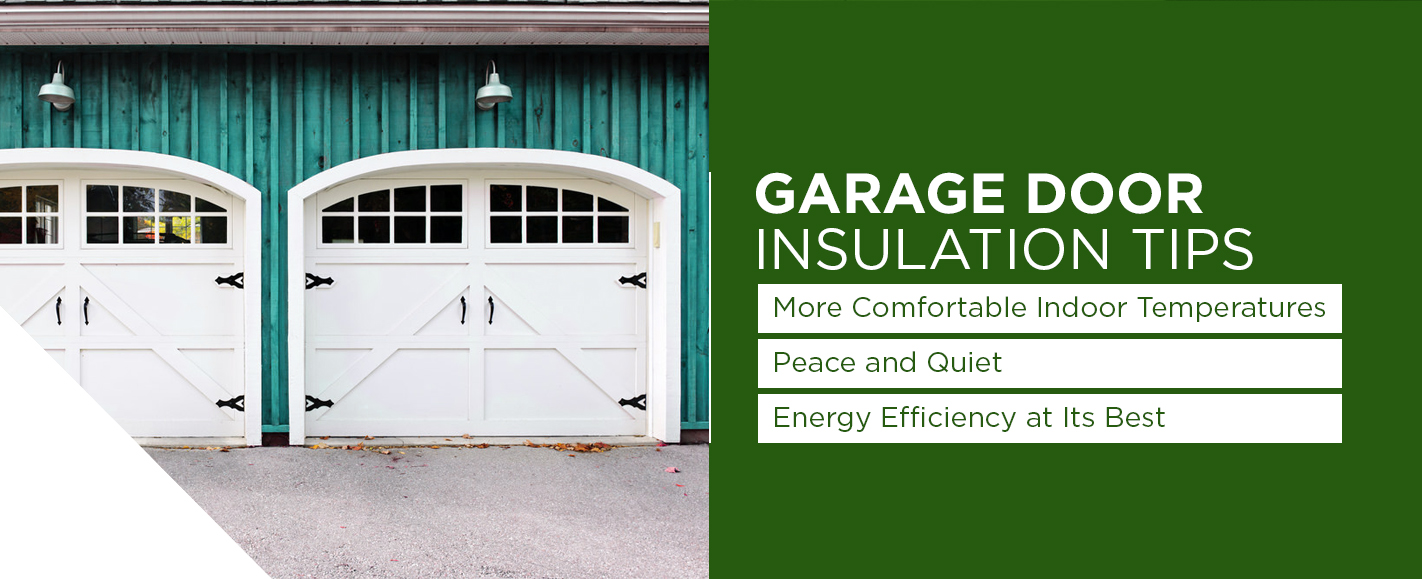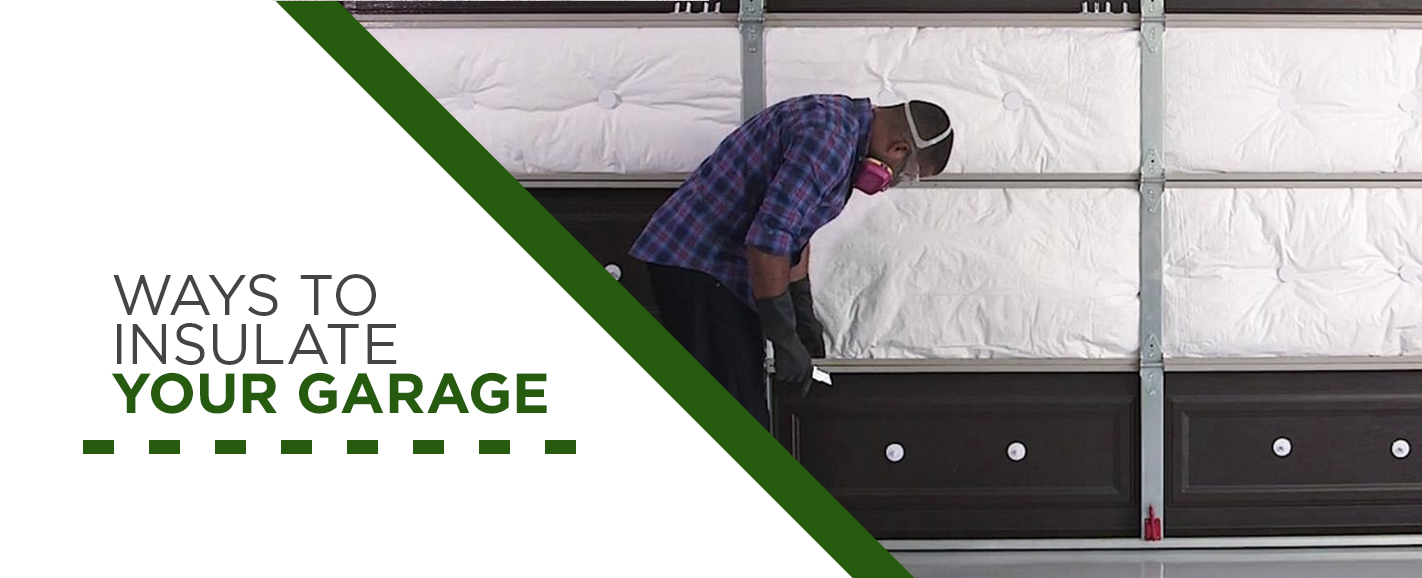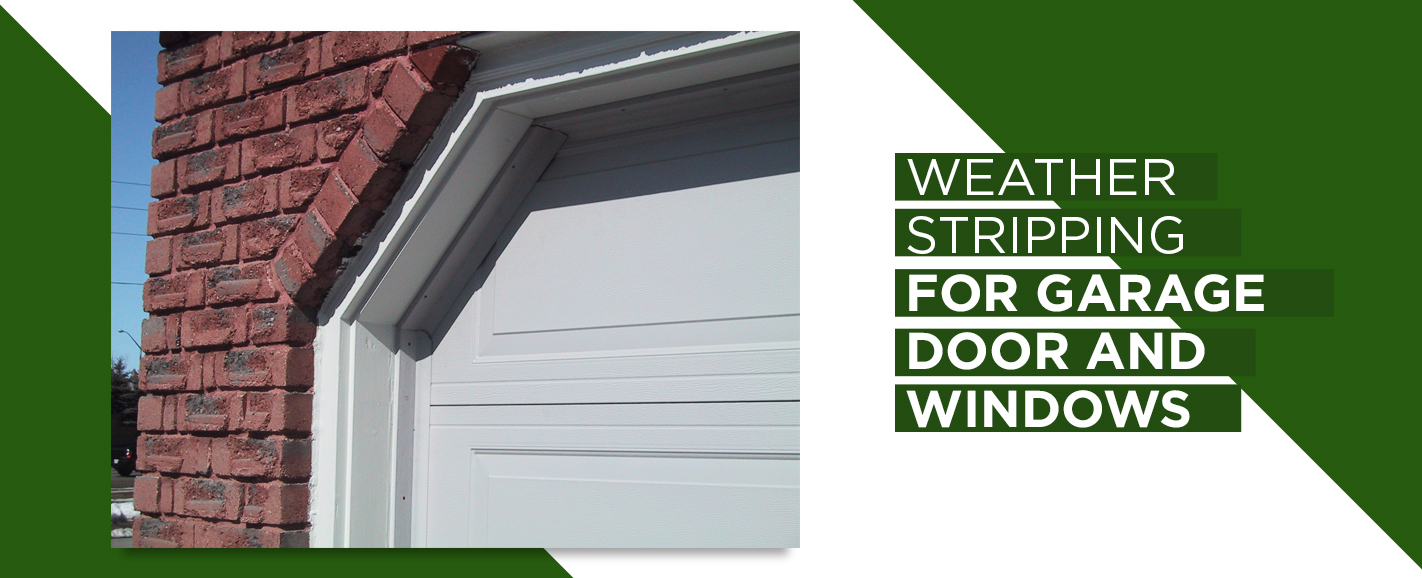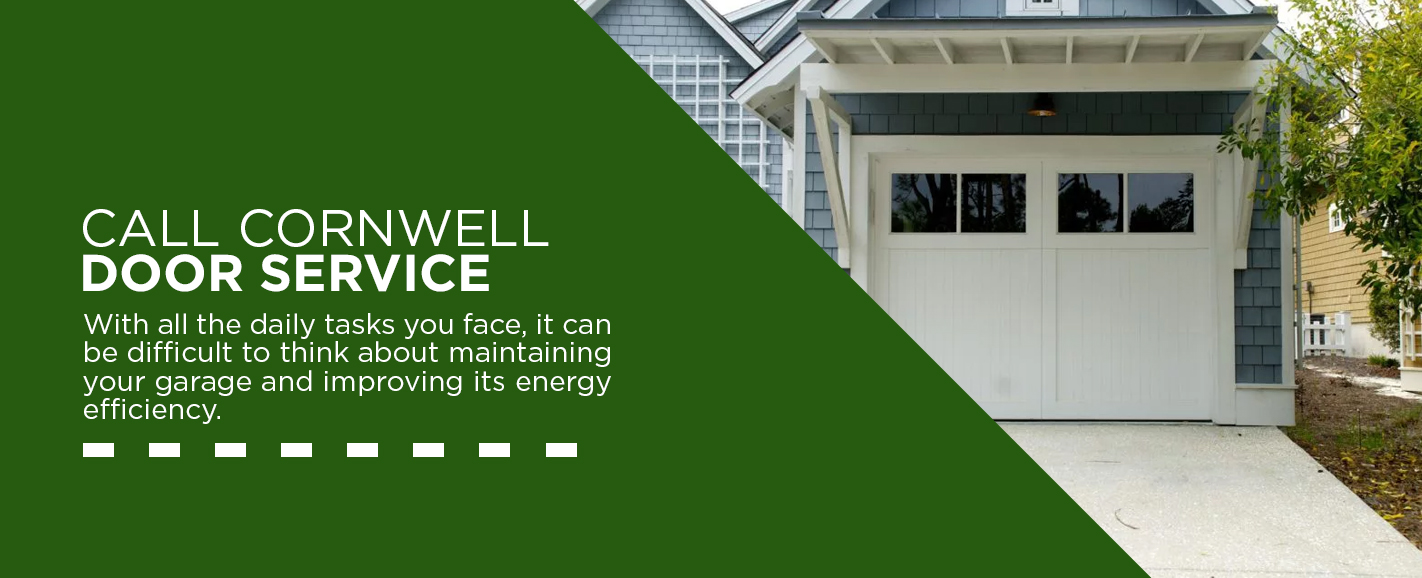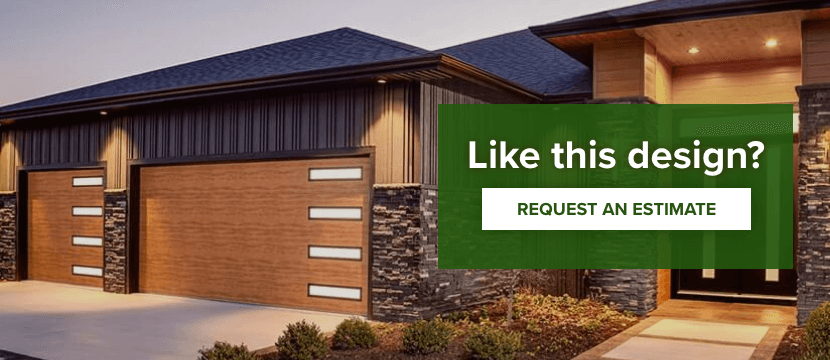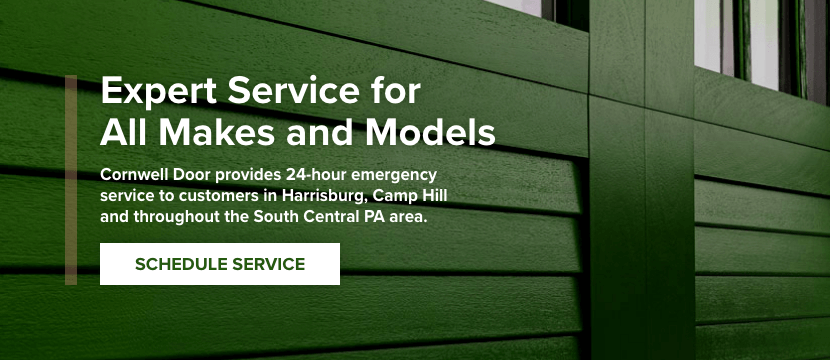A Guide to Broken Garage Door Springs
When was the last time you thought about your garage door springs? Has it ever crossed your mind that they might have a shelf life and sometimes need proper maintenance and replacing? Most people will answer no to one or both of those questions. Garage door springs are not on everyone’s mind until they become a visible or audible issue. Your garage door is quite an essential piece to every home, whether rarely opened or often opened. Keep reading this guide to broken garage door springs so you become knowledgeable about preventative maintenance, repair, signs of wear and tear, typical life spans of door springs and more.
Why Garage Door Springs Matter
Garage door springs balance the weight of your garage door so it can open and close smoothly. When you open your garage door, the tension in the springs releases to assist in lifting the door to the open position. Most garage door springs have an average lifespan of about seven years, but you should inspect them every six months, lubricate them annually, and consider replacing them every seven years. Broken or bent springs can cause your door to suddenly fall, which can be very dangerous. If you do have a broken garage door spring, you should have it repaired as soon as possible.
Types of Garage Door Springs
There are two garage door springs that you can choose from, but which one is perfect for you? First, what exactly are garage door springs? They are the entire reason your garage door can open and close. Because the direct use of garage door springs is why the door opens and closes smoothly, knowing the difference between the two types of springs you can use is equally as important.
Extension Spring
These springs extend and stretch to provide the movement with the garage door. Generally, garage doors will have two extension springs — one on each side of the door running parallel to the track. When the door is closed, they extend, and when the door is open, they retract utilizing pulleys and cables to create the movement.
Extension springs are used mainly in residential garages. When extension springs are part of the garage door setup, you must also install safety cables to help if the cables snap. The spring snapping is highly unlikely, but it can happen, so it’s better to be prepared! There are a few different cables within the extension spring style to choose from.
Double Looped
Even though the double looped extension spring is a more robust choice than open looped, it is much harder to replace.
Clipped Ends
Durability is where this style excels, and the clipped ends help relieve stress from the extension springs during use, making this the more intelligent choice for heavier garage doors that are 200 pounds or more. The downfall is that they are also harder to replace than the other styles.
Torsion Spring
The size and weight of your garage door will dictate how many torsion springs are helping open and close the door. There are generally one or two for average garage doors, but there can be as many as four for heavier-duty garage doors. They are found above the garage door opening. Torsion springs utilize torque to open and close the garage door by winding around the shaft as the door lifts and gaining tension as it closes.
There is more tension on the springs when the door is closed, which is when most springs break. If the springs break while in the open position, the garage door could fall, so maintain safety guidelines when having your garage door open and never walk underneath the door during the opening procedure. Much like extension springs, there are different types of torsion springs.
Steel Rolling Door
Steel rolling door options are found in commercial builds and used on rolling doors.
Torque Master
Having the springs encased in the torsion shaft makes the torque master the safest option for the torsion spring system.
How To Tell Your Garage Door Has a Broken Spring
The first sign of your garage door having a broken spring is that the garage door will start functioning strangely. The garage door will have trouble opening and closing correctly, and you may see springs swaying if they are disconnected. Another indicator that your garage door spring may have broken is if the garage door is bent. With the spring not supporting the usual amount of weight, the garage door takes on more weight than it’s supposed to handle. An indicator of this is when you raise the door when the springs are not functioning, and the extra weight causes the door to bend outward.
You will also notice differences in how the garage door closes when the spring is not adequately handling the garage door’s weight. The door will close faster than expected and not move as smoothly. The final noticeable sign of broken springs or springs that are not functioning as they should is that nothing happens if you try to open the door with the emergency rope.
Why Do Garage Door Springs Break?
The main reason garage door springs break is the most easily guessed — wear and tear. Garage door springs have an engineered set of cycles. A cycle for a garage door is indicated by going up then back down. The springs have a rating of about 10,000 cycles. At first, that may seem like a lot, but when you think about how often you use the garage door each year, it adds up quickly.
For example, if you keep your car in the garage, you will be doing at least two cycles per day. Add in extra trips such as errands, children playing in the driveway with the garage door open, your spouse using the car for their needs, or even having two cars all add extra cycles to each day. Some households use the garage as their front door, which increases the cycles immensely, and the 10,000 cycles are suddenly gone before the average time frame, which is 5-7 years.
Rust
When rust starts spreading on the spring, the lifespan decreases drastically. Rust will increase the amount of friction the coils cause while expanding and retracting during cycles. As corrosion increases, the rate of failure speeds up. Lubricating the springs with a silicone-based lubricant a few times a year can increase the lifespan and help the cycles remain smooth.
Improper Maintenance
Proper maintenance will help prolong the lifespan of the springs and give you insight into when they start failing. All springs will fail eventually but keeping them lubricated, cleaned, and properly cared for will help longevity. Checking the garage door balance is another task that needs to be done seasonally at a minimum. Winter is a typical season for spring failure because of the cold and tension combined with more moisture in the air. To check the balance, proceed with the following:
- First, place the door in manual mode by pulling the emergency cable.
- Next, lift the door about halfway and let go. If the springs are in good condition, they will hold the door still. Alternatively, if the door sags a little bit or falls, that’s a sign that the springs are beginning to wear and need adjustment or replacement.
How to Repair a Broken Garage Door Spring
While you can get parts from online or hardware stores to repair broken garage door springs, it can be a dangerous job. Professional help is always strongly suggested when needing to replace your springs. With the two main types of springs, your garage door can have different hazards that come with replacing them on your own.
Extension Springs Replacement
Even though the extension springs can be easier to replace, there are still hazards with doing it on your own. The garage door could fall on you or someone else, or you could cut yourself on the rusted old metal of the springs.
Some people go to Lowe’s, Home Depot or other home improvement stores and buy the biggest spring they can find hoping it will last longer, but bigger doesn’t always mean better. Extension springs should be purchased according to the weight of your garage door. If you use an extension spring bigger than what you need, your garage door may fly up quickly when you open it, and it can be challenging to close. This issue can cause additional damage to your springs, requiring further repairs.
It’s recommended to buy extension springs through a certified garage dealer rather than making the purchase yourself. That way, you know with certainty you have the correct-sized spring properly suited to the weight of your door. Your garage door will be easier to open and close with the right extension spring.
Torsion Springs
With the tension that comes with torsion springs come many potential hazards when attempting to replace them on your own. Because the metal has so much tension, it poses a severe risk of metal flying out from a part if something snaps or breaks during the repair. Along with potential flying metal, you can get cuts from rusted metal, or the garage door could fall on someone, and more.
Professional Replacement Is Best
To circumvent the potential hazards to yourself or others, you need to get professionals to repair or replace your garage door springs for you. Attempting to do any repairs or replacements on your own poses a risk of serious injury.
Many homeowners don’t realize how easy it is to get a professional out to their home to replace the springs and attempt to do it independently. It is excellent to take care of your home and proactively fix anything wrong with it, but in certain situations, such as with garage door springs, you will be doing yourself a favor getting a professional.
Is It Safe To Open the Garage Door With a Broken Spring?
You may think that if you have a garage door opener, it will still be safe to open your garage door with it if a spring is not functioning correctly. Unfortunately, it is not safe to open the garage door even with an opener. If you attempt to open the door with your opener, various problems can arise:
- The door panels could crumble.
- You could potentially strip the gears in the opener attached to the garage.
- The motor of the opener could burn out.
- The rails may bend.
- Parts of the opener carriage could break off as the motor works harder to open the door.
- Although it is rare, there have been instances of the opener ripping itself from the ceiling, causing even more damage and other potential hazards.
Do not attempt to open your garage door if the springs are not working correctly. Even if you don’t have a garage opener, you could do other damage depending on which type of spring system you have. With the weight of garage doors, which can be around 500 pounds, you would be lifting that weight all on your own without the help of the spring system working. Doing so will be difficult and take a toll on your body. You could potentially damage your back or legs, or the garage door could fall on you and cause even more bodily harm.
If a single spring is still functional, you can open your garage door, but it’s not recommended to do this frequently. The door will be challenging to open, and the risk of harm still exists. You can also use your garage opener to assist in opening the door safely if someone is trying to back their car out of the garage. Practice caution when opening your garage door to prevent damage or injury, even if one of your springs is still intact.
There are some ways you can open your garage door without the opener if you need to get into the garage. Following these guidelines will help you lower the risks of opening a broken garage door.
- Have someone help you lift the door
- Make sure you use proper precautions for your back and don’t let the door fall on your fingers or feet.
- Disengage the door by pulling the rope hanging from the J-arm until the mechanism comes free. Remember that before your springs broke, you had the help of both the opener motor and the springs to open the garage door, so be cautious when lifting the heavy door!
- Lift the door until it settles on the horizontal rails, and then carefully take your hands away to make sure it will stay in position.
While lifting the door, remember not to force it because you will bend the panels. To avoid bending the panels, lift the door evenly with a partner. To close the door, you will need to reverse the steps, but with the weight coming down, it may be more challenging to control the garage door closing so it does not fall too fast and break more parts along the way or hurt someone.
Contact Cornwell Door Service To Help With Your Garage Door Springs!
Whether you have a commercial garage door or residential garage door that needs springs replaced, Cornwell Door Service is here for you! They will help you with any of your garage door needs, including garage door openers, repairs, preventative maintenance, and more. Contact Cornwell Door online or call us today at 717-273-9841 to schedule a repair today!
Repair vs. Replace Your Garage Door
If your garage door has seen better days, you may be thinking about whether or not you should repair or replace it. However, there is a time and a place for everything, including repairs and replacements. There are several factors to consider to help you make the final decision to fix it or switch it out for a new one.
Refer to this helpful guide to help you decide if replacement or repair is the right option for you.
The Lifespan of a Garage Door
The average lifespan for a garage door is between 15-30 years. However, usage, weather conditions, regular maintenance and the overall quality of installation can impact the lifespan of your garage door. Keeping your garage door well-maintained over the years will help you extend its life. It’s recommended to schedule an annual garage door inspection once a year to keep your garage door running smoothly and extend its lifespan.
When To Replace a Garage Door
Generally, a good garage door can last for many years. However, simple aging and wood rot are just a couple of things that can make replacing a garage door the better option than trying to make repairs. If you notice any of the following signs, it could indicate it is time for a garage door replacement:
1. It Lacks Child Safety Features
Older garage doors do not have the safety features that newer garage doors now offer. One of the ideal features of newer garage doors is that they include safety sensors that stop the door from moving if it detects pets, children or objects under the door. This prevents serious injury and may also prevent costly damages to your belongings. While aftermarket add-ons are available for older garage doors, they are not the most cost-effective route to take.
2. The Door Is Old
Sometimes, a garage door can outlive its days of beauty. A nice garage door provides curb appeal and adds value to any home. While you may feel that some fresh paint could help bring it back to life, a newer garage door can offer much more. Today’s garage doors are more modern and visually appealing, and more suitable for the size of modern vehicles. Additionally, newer garage doors provide higher levels of security than their predecessors, making the debate of painting vs. replacing the garage door an easy one to solve.
3. There Is Weather Damage
Wind, rain, snow and even the sun’s UV rays can cause a lot of wear and tear on garage doors. If there is a considerable amount of weather damage on your garage door, including rusting, warping or discoloration, it is time for a new one. Dirt, leaves and other debris can also become lodged inside the garage door’s tracks over time, causing friction and resulting in issues with track misalignment.
4. Energy Costs Are Increasing
If your utility bill has seen a recent spike, it could be a good reason to replace your garage door. Garage doors are rather large and can let in a lot of outside air. Even with insulation, a difference in temperature between your home and the garage can still have a pricey impact on your energy costs.
Newer garage doors are designed with energy efficiency in mind. Built with materials and insulation that prove to be more effective at reducing energy costs, a garage door replacement can save you money and greatly increase your home’s value.
5. The Wood Is Rotted
Wooden garage doors can be prone to warping in moist environments. If your garage door has shown signs of wood rot, it is best to replace it with a newer version. Newer garage doors are made of more durable and weather-resistant materials than their older, wooden versions.
When to Repair a Garage Door
There are some instances in which a garage door does not need to be replaced. Minor issues can be repaired, which can save you in expenses. Learn about some of the most common garage door issues that can likely be solved through repairs.
1. The Garage Door Is Sagging
If your garage door appears to be sagging, the chances are that the balance is off. Garage doors operate on balanced springs that reduce the energy needed to lift them off the ground. When the door is out of balance, the lifting mechanism is forced to work harder than normal to raise and lower the door. This wear and tear can ultimately lead to broken or worn springs and sagging doors.
An experienced technician can generally fix this issue.
2. It Suddenly Breaks Down
Although it can be frustrating when a garage door breaks down, the good news is that it can likely be repaired. It could be as simple as replacing dead batteries in the remote. However, if that does not seem to be the issue, calling in a professional technician for a diagnostic is always a good idea. They can troubleshoot the issue faster and help you save a lot of time when it comes to getting the issue fixed quickly and correctly.
3. Your Budget Doesn’t Offer the Flexibility to Buy a Replacement
Exactly how much does it cost to fix a garage door? Repairs are considerably cheaper than buying a replacement, but the specific cost varies depending on factors like the door type, size, damage and company you work with. If you are having issues with your garage door but cannot afford to spring for a brand new one, repairing it is a good option to explore. A qualified technician will be able to help you determine if a repair is the best solution for your budget.
4. Your Garage Door Has Damage Or Dents
Physical damage and dents are common garage door problems, and can often be repaired. However, the extent of the damage determines if it is better to repair or replace your garage door. Most garage doors have panels that can be replaced. If the damage or dents only affect one or two panels, they can easily be replaced. If three or more panels are damaged or dented, it is often more cost-effective to replace the garage door entirely. Damaged garage doors that are made of metal are often easier to fix and less expensive, but wood or composite garage doors are harder to repair and are typically more expensive to fix.
Common Garage Door Problems That Can Be Fixed
Here are some of the most common issues garage doors can have that are easily repaired:
- A single panel is damaged: Damage done to a single panel is no reason to be alarmed. Garage doors are made up of several panels, and it is generally a simple fix to replace damaged ones. However, ignoring a single damaged panel can lead to costly expenses in the future, so it’s better to repair it as soon as possible.
- The door is discolored: If your garage door does not show any other signs of damage aside from being discolored, this can be easily fixed. The process is as simple as washing the surface and carefully removing any paint that may be peeling. Applying a primer and then a coat of paint in your chosen color will have your garage door looking new again.
- A single panel is dented: Fixing a dented garage door costs less than replacing it. Repairing this as soon as you can is advised to prevent any damage to the rest of the garage door system and to keep your garage looking its best.
Garage Door Replacement vs. Repair Cost Comparison
The cost of a garage door replacement or repair depends on the type, material and size of the garage door. For repairs specifically, the cost depends on the extent of the damage or problem. For minor garage door problems, the average cost for repairs is $250 and typically ranges from $150 to $500. For more severe damage, the costs can range from $600 to $1,700. In comparison, the average replacement cost for basic garage doors hovers around $700 while higher-end garage doors can cost up to $4,500.
For the most accurate cost comparison, it’s best to ask for a repair quote and a garage door replacement quote from your local garage door technician. That will also help you take other cost factors into consideration, such as labor for garage door repairs or any special features you would like for your replacement door.
Contact the Experts at Cornwell Door
If you are unsure whether your garage door needs to be repaired or replaced, we can help. Our professional team can inspect your door to help you make the final decision. Contact Cornwell Door Service today for more information, or call us at 717-273-9841!
What Do You Do If You Back Into Your Garage Door?
Have you backed into your garage door and want to know how to fix it? Luckily, you’re in the right place. You’re not the first person to back into their garage, and there are plenty of easy fixes that can help you get your garage door back into tip-top shape.
If you’re wondering how to fix your garage door after hitting it with a car, we’ve got you covered. Follow our simple, step-by-step instructions for what to do when you have a smashed garage door.
Assess the Damage
If you ran or backed into your garage door, you’re probably thinking “I hit my garage door with my car, what do I do?” Your first step is to take a deep breath and assess the damage. After making sure everyone is safe, the first thing you should do is check out the damage from when the car hit the garage door.
An important tip: just look, don’t touch! You could possibly hurt yourself or cause even more damage to your garage door if you try moving or fixing it yourself. Although your door may look okay, using your automatic garage opener or forcing your door open manually could cause permanent damage to the internal system and could cause the door to lose control and come down on you.
Take notes and photos of the damage and make a record of what happened. Then, call experts to assess the damage before doing anything else. It’s less expensive than you think to fix just a dent.
While you’re waiting for help to arrive, assess the damage to your car. You should also notate and photograph any vehicle damage and be careful opening any doors that your vehicle could have impacted. Think about the next steps you might need to take in terms of car repair and insurance.
What’s Wrong With My Door?
You may be curious about what damage occurred if you backed into your closed garage door and what you can do to fix it. Here are a few common scenarios our garage professionals frequently fix:
-
Your garage door is stuck open: If you hit the garage door while it was being opened or you tried to open it after the accident, it could be stuck. Having a stuck garage door can pose security issues if you have valuables in your garage. One of the best things you can do is contact a garage door expert to get the problem fixed. Even if it’s after hours, most companies have an on-call crew ready to help any time of day or night. Be sure to refrain from manually or automatically trying to open your door, which could cause more damage.
-
The garage door fell off its track: If you think your garage door got off track, try not to touch it or do anything else until a professional arrives. It could be potentially dangerous to try to fix a garage door that fell off its track. Waiting for an expert to fix it safely is a must.
-
The bottom of your garage door is bent or crooked: While it may seem like a DIY project, it’s much more complicated than it looks to fix a dent in a garage door. You could likely cause more damage by attempting to fix the dent yourself, resulting in the need to get a brand new door altogether. In this situation, assess the damage and call a professional if it’s anything more than a small bump.
-
Your automatic opener isn’t working: If your garage door was hit but looks completely normal, you might try to use your garage door opener like normal. If the automatic door opener isn’t working, you may need to contact an expert. There could be something wrong with the entire system in this scenario, so the best thing to do is call an expert to fix it.
Do I Have to Replace a Dented Garage Door or Can I Leave It?
Depending on the amount of damage, your garage door may be safe to use, even with a dent. And if you want to know if you can unbend a garage door, the answer might be yes, depending on how large it is. If the door is only bent or dented a small amount (and you don’t mind the appearance), you might not have to replace it — as long as the tongue and groove (joint) are still lining up correctly.
If this is the case, you should reinforce the damaged panel with a strut to ensure that it doesn’t completely split. If these instructions sound like a different language to you, an expert can help! It’s best to call a garage door professional in any scenario who can assess and fix the damage so you know you’ll be safe.
If two or more panels have larger, more extensive dents, you might want to replace your door altogether. You could also choose to replace each panel individually, which would end up costing almost as much as a new door. If your door is more than five years old and has damage to more than one panel, you’re better off — both financially and in terms of safety — replacing the door.
Replacing a garage door has one of the highest returns on investment for any home improvement. So, if you want to invest in something new, a garage door could be the best option.
Will Insurance Cover Garage Door Repairs?
So, how much does it cost to fix a dented garage door, and will insurance cover it? You’re probably wondering how insurance factors into smashed garage door incidents. If the scenario involved backing your car into the garage door or anything that resulted in damage to your car, you should immediately document the damage and call your auto insurance company.
In addition, if your garage door is heavily damaged, you should contact your home insurance company. Some policies cover dented garage doors and other garage door incidents. You’ll want to ensure you understand what both your homeowner’s and car insurance policies cover for instances like these. It’s essential to call no matter what to ensure that you are utilizing your coverage even if you’re not sure what your policy covers.
Cornwell Door is Here to Help
Don’t fret if you hit your garage door with your car! Cornwell Door is here to help you decide on the best step moving forward. No matter the damage — from a small dent to an unhinged door — we are ready to help at any hour of the day to ensure your safety.
Contact Cornwell Door online with any questions about your garage door, or call us today at 717-273-9841!
Common Garage Door Safety Tips for Homeowners
When we think of hazards around the house, garage doors aren’t usually the first thing that comes to mind. But garage doors — especially older models — can pose a danger if not handled correctly. The US Consumer Product Safety Commission reports that an astounding 30,000 garage door-related injuries occur every year. For this reason, we decided to compile a list of our top, expert-recommended garage door safety tips to improve your garage door safety!
Jump to a Section Below:
- Steer Clear of Door in Motion
- Perform Proper Maintenance
- Test Safety Features
- Practice Garage Door Opener Safety
- Hire a Professional for Installation and Repair
- Be Aware of Tension Springs
1. Steer Clear of Doors in Motion
You’ve probably experienced the following scenario — you back your car out of your garage and then realize you left something in the house. You stop the car and run inside to grab what you need. On your way back out to the car, you press the garage door switch and plan to run out while the door closes.
While many people regularly do this without getting injured, we strongly discourage this habit for the following reasons:
- One mistake is all it takes. As you run to make it out before the door closes, there’s always a chance of tripping on your shoelace or slipping on something slick. While you might make it out safely 19 times out of 20, just one trip could end in tragedy.
- Your kids might copy you. Doing this on a regular basis will set a negative example for your children, who might try to emulate you. When your children see you quickly and confidently escape the descending garage door, they may think it looks easy, then try it out and injure themselves in the process.
You should try to avoid entering a garage door while it opens, as well. Although this may appear safer, there are several features, including the safety motion sensors, which may get confused when you cross the threshold. While the door will most likely stop when it senses you, there is a chance something more serious could occur with the safety features. It might start descending again, which could cause serious injuries.
When you open or close your door, watch it closely until it finishes. Not only will this allow you to make sure your kids or pets aren’t moving toward the garage door unnoticed, but it will also ensure that your door works properly and isn’t stuck.
2. Perform Proper Maintenance
Garage door malfunctions can sometimes cause injuries, and you can reduce the chance of a malfunction by routinely performing the following maintenance tasks:
- Keep your eye on your door. The most effective thing you can do to prevent a garage door malfunction is to examine it when it opens or closes. Pay attention to whether the door moves smoothly or not. You should also listen for any strange noises — is the door silent, or does it make scraping or grinding noises? Do the springs, cables and pulleys look symmetrical?
- Tighten all parts. On average, garage doors open and close over a thousand times per year. All of this movement and vibration can cause certain components to become loose over time. Take a close look at bolts and roller brackets and, if they appear loose, tighten them up using a socket wrench.
- Test the balance of your garage door. If the garage door is not balanced correctly, your garage door opener must work much harder and will have a shorter lifespan as a result. To test the balance, first pull the release handle of your opener to disconnect it. Then, move the door roughly halfway up with your hands. If your door starts to move by itself, this means the counterweight system is not correctly balanced. If this is the case, do not attempt to balance the door yourself, as it involves adjusting the springs, which can cause serious injury. Have a professional perform this potentially dangerous task.
- Examine and replace your rollers. Regardless of whether your rollers are made of steel or nylon, they will need to be inspected two times per year and replaced about once every seven years. If you use your garage door several times a day, they’ll need to be replaced sooner. If you notice that your rollers are cracked, chipped or worn, replace them as soon as you can. This can be done by taking out and reinstalling any roller brackets not directly connected to the cable system.
- Replace your weatherstripping. Weatherstripping refers to the rubber seal strip at the bottom of the garage door. If it appears cracked or brittle, replace it as soon as possible to prevent the elements from entering your house. Home improvement and hardware stores sell weatherstripping by the foot. All you have to do is cut it to the size you need and insert it into the grooves. Keep the wide angle of the flange on the inside. You can read our online guide for replacing weather stripping.
- Keep all moving parts lubricated. If you spend just 10 minutes every year greasing up the components of your garage door, it will add years to its lifespan. To coat the overhead springs, use a spray lubricant, and to lubricate the chain or screw of the opener, use white lithium grease.
- Inspect your cables. Take a close look at your cables to see if there are any broken strands or damage near the roller bracket on the bottom. If so, hire a professional to fix them. As these cables are under extreme tension, handling them without the proper training could result in serious injury or death.
- Keep the tracks clear. Make sure there is no debris on the tracks on either side of the door. If you like, you can also grab a level to check if the tracks are plumb. If not, you will want to hire a professional to make the necessary adjustments.
- Check the door itself. You’ll want to groom the garage door itself as well. Doors made of wood must be inspected for warp and water damage as well as peeling and chipped paint. Doors made of steel may have rusty areas that you’ll have to sand, prime and paint. You will also want to wash your door regularly, which you can do with a mild, all-purpose cleaner. To save time, you can do this at the same time you wash your car. As your garage door constitutes about a third of your home’s exterior, it’s important to keep it clean and fresh.
Note: If you feel in any way uncomfortable with these repairs, do not attempt them yourself — hire a certified technician that can properly check all garage door safety features and make safety repairs as necessary.
3. Test Safety Features
Modern garage doors come with three standard safety features, which need to be checked regularly:
1. Automatic Reversal System
This feature has been a federal mandate for the past 28 years. If your garage door senses an obstruction in its path, it will stop immediately and then reverse its direction.
However, because openers and springs tend to corrode over time, it’s important to ensure this feature works correctly. To test the mechanical feature, place a brick or piece of wood on the garage floor in the door’s path. When the door descends and touches the object, it should immediately reserve direction. Older garage openers may not have these safety features, so if you own an older door, you should update it.
2. Infrared Motion Detector
This detector is located on the bottom left or right of the garage, roughly six inches above the garage floor. If it senses an object in its path, which could be anything from a garden tool to a bike wheel, it will also stop and reverse direction. To test this mechanism, close your door and pass your leg in the path of the door. You may need to realign them if they are not functioning as expected.
3. Emergency Manual Release
The emergency manual release is a red handle that hangs from a rope and is used when the garage door malfunctions during a power outage or if someone is trapped. When the release is pulled, it will disconnect the opener from the garage door. This is considered the most important garage door safety feature, so pull it regularly to make sure it works. Garage door safety is extremely important, which is why garage doors have safety and emergency features in the first place!
4. Practice Garage Door Opener Safety
Moving a large garage door up and down with the push of a button isn’t just a great convenience — it’s also highly satisfying.
Considering the satisfaction that an adult can derive from this experience, imagine how much fun it must be for a kid. That’s why many parents will hand the remote to kids so they can experience this excitement. Unfortunately, however, giving your kids control of the remote isn’t the best idea — even under supervision. Because kids enjoy pressing the button so much when parents are around, they’re often tempted to play with it when they’re not around, too. This is something you want to avoid.
Here is one possible scenario — your children and their friends are playing hide and seek, and one child realizes they can gain an advantage by using the opener. But while they have only intended to open the garage door to see if someone is hiding in the garage, they may press the button twice by accident, causing the garage door to close again. At their young age, this unintended action may fluster them and cause them to drop the remote. A younger kid, who is under the door and unaware of it closing, could suffer a tragic injury.
Although this is a worst-case scenario, you should always keep your remote where kids cannot reach it so they won’t face the temptation to use it with no one around.
5. Hire a Professional for Installation and Repair
Although experienced DIYers may feel comfortable handling some aspects of garage door installation and repair, we believe that it’s best to leave both of these intricate tasks in the hands of seasoned professionals. Here are the reasons:
- Experience: Many homeowners are confident they can install and repair garage doors because the DIY videos often make it look so easy. However, this is usually because the person in the video is an experienced professional. Although it may appear easy, garage door installation and repair are extremely challenging projects for those with limited experience. Professionals who perform installations and repairs have extensive training in the field and possess the skills to do the job properly and quickly.
- Right Parts: By hiring a professional to install or repair your garage door, you can also be confident that your door will have all the right components. For instance, a professional will install an opener that is the perfect size for the weight and size of your door, which will significantly prolong the life expectancy of the opener. Professional installers also have all the proper tools to get the job done correctly and efficiently.
- Right Order: Garage door installation and repair involves many steps that must occur in a certain order for the door to work properly. These steps include the proper alignment of the photo eyes, correct wiring, properly securing the door opener and correctly installing the springs, pulleys and cables. The door must also be balanced properly. All these complicated steps must be performed in the absolute correct order.
- Safety: Garage door installation and repair can be risky endeavors, particularly when working with the springs. However, the garage doors themselves can also be dangerous. Garage doors are heavy, large and awkward to handle if you don’t have any experience. Furthermore, installing garage door openers involves working with electricity, identifying properly grounded power outlets and learning extra safety precautions, which require training. A professional installer will also test the door once it’s installed to make sure all the safety measures function properly.
- Warranty: The majority of garage doors come with a warranty. However, most of these warranties become void if the homeowner attempts to install or repair the doors by themselves. If you try to perform an installation or repair on your own, you’ll likely spend many hours on the project without the certainty that you’ll be satisfied with the final product. We believe it’s best to leave these jobs in the hands of professionals who will stand behind their work by offering a warranty and guarantee.
6. Be Aware of Tension Springs
Of all the garage door safety tips we shared in this article, the following is perhaps the most important — if you are not experienced or familiar with garage door springs, do not attempt to remove, repair or make any adjustments to the springs or any part to which the door-spring components are connected. This includes steel brackets, wood blocks or cables. Adjustments or repairs made to high-tension springs must be performed by a professional.
Request an Estimate from Cornwell Door Service
Cornwell Door Service has provided South Central Pennsylvania with high-quality garage door installations for more than four decades. All of our work is done to the highest standards of quality and with respect for your budget. We work with industry-leading manufacturers like Wayne Dalton and Clopay® and specialize in turnkey service, which includes assisting you with your door and opener selection, installing the door and backing our installation with long-term maintenance and support.
If you’re thinking about updating your garage door, you can request a free estimate or call us today at 717-273-9841!
How To Make Your Garage Energy Efficient
‘Tis the season for colder temperatures. As your home’s heater kicks into high gear, there’s no time like the present to make sure your home is up to the challenge of providing adequate heat for your family without breaking the bank. When you’re considering ways to improve your home’s energy efficiency, don’t forget to include your garage on the list of rooms to improve.
Even though the garage isn’t a space most people spend an extended amount of time in, it can play an integral role in your home’s overall energy efficiency. The garage is often the most overlooked area of the house because it’s just not used as much. But, consider this — an average two-car garage measures approximately 480 square feet. This accounts for roughly 20 percent of the average American home. That’s a lot of space to overlook when you’re working to lower energy costs and improve your home’s efficiency.
Designing an energy-efficient garage is more than just purchasing an insulated door or limiting how much you put the door up and down. In some cases, purchasing an insulated garage door may not even make a significant difference in your garage’s energy consumption. Why? Energy efficiency is a measure of how hard your home’s systems have to work to maintain comfortable temperatures inside. So, energy efficiency encompasses anything that impacts how hard those systems have to work — including lighting and electric, building materials and even heating the garage itself. Having an insulated door but overlooking these other areas means you aren’t maximizing your garage’s potential.
Garage Door Insulation Tips
Before you start making plans and spending money, it’s important to do your homework.
When you think about energy efficiency in your garage, the first thing that comes to mind is probably the door. After all, a majority of homeowners rely on their garage door as their home’s primary entry and exit point. These days, a lot of garage doors see far more use than a home’s front door.
Insulating your current garage door — or replacing your old door with a new insulated one — can be a good first step when it comes to improving your garage’s overall energy efficiency. Insulated doors have an interior core built to slow the transfer of hot and cold air between the outdoors and the interior of your garage. If you’re wondering whether or not an insulated door will make a big difference, consider these benefits of insulated doors:
1. More Comfortable Indoor Temperatures
Your home’s garage acts as a buffer to outdoor temperatures by standing in between the outdoors and your indoor living space. Think of it as the vestibule you pass through when you head into a bank or your favorite restaurant. Like these entry points, your garage is designed to prevent outdoor temperatures from easily invading your home. With an insulated garage door, you can keep more unwanted air outside and maintain the temperature you want from your heater or air conditioner without interruption. This is because those outdoor temperatures have more layers to pass through.
An insulated door helps to maintain the indoor temperature of your home, and it also has a significant impact on the temperature of the garage itself. Why is this important? If you have a workspace, hobby shop or even a laundry station inside your garage, keeping the temperature bearable any time of year goes a long way in keeping the garage usable. Maintaining an even temperature inside of the garage also protects your vehicles, tools and anything else stored there. Equipment like hoses, power washers and lawn mowers — anything that has a liquid inside of it — can be damaged if left in frigid temperatures over time. Even your car battery will function better in a garage that is shielded from extreme winter temperatures.
2. Peace and Quiet
While it’s not technically a benefit related to energy efficiency, no one ever argued with peace and quiet. Insulated garage doors are heavier, and heavier garage doors aren’t as loud when they’re going up and down. When a garage door has a rigid inner core, it cannot move and rattle the way a standard door would.
3. Energy Efficiency at Its Best
Standard garage doors are typically manufactured with metal or include some metal component. Metal transfers heat and cold very effectively, but the problem is that you don’t want the temperature outside to be transferred inside. If it were, then your home would have to work harder to operate effectively — your home’s efficiency would be very low. With an insulated garage door, the metal elements are covered with foam or some other kind of insulation in its core, reducing the ability of the metal to conduct heat or cold into your garage and, ultimately, your home.
Ways to Insulate Your Garage
As we said earlier, an insulated garage door might not make a significant difference in making your home more energy efficient if your garage is losing energy in other ways. Here are some of our top tips for improving your garage door efficiency:
1. Solar Heating for Your Garage Door
An insulated garage door is a great first step toward maximizing the energy efficiency of your garage. However, it’s only an effective strategy if it’s done in tandem with other things. This is because insulation is designed to slow down the transfer of hot and cold temperatures — it’s not necessarily going to stop them all together.
If you spend a lot of time working on projects in your garage, then an insulated door alone isn’t going to cut it during the cold winter months. Sure, you could plug in a space heater nearby, but it’s not going to generate enough heat for all the space in your garage and it uses a lot of electricity, which means it’s not super energy efficient. You may want to consider heating with a solar heater, which produces infrared heat designed to reach every corner of your workspace.
How does it work? Infrared heaters use light in the infrared spectrum to generate heat. They don’t operate on any fuels, such as propane or natural gas, and they don’t take electricity. There are a variety of models on the market, but solar heaters basically operate by mounting a small solar panel on or near a window or a place that gets a lot of sunlight. It absorbs the light and then generates heat through the heating unit. Ultimately, the sunlight creates a generous amount of heat that can make your garage workspace comfortable even when snow is falling outside. And, since it is solar powered, it doesn’t contribute to increased energy costs within your home.
2. Weather Stripping for Garage Door and Windows
Sealing cracks and crevices around your door will keep your garage at a more even temperature, and the good news is that it’s not complicated or expensive to do this. By installing new weather stripping — or replacing it if it’s old and cracked — you can prevent air leaks and keep the temperature of your home more consistent. While it may seem daunting if you haven’t replaced weather stripping before, it’s actually a relatively simple procedure that doesn’t require a lot of time or effort. Companies that specialize in garage door installation and repair are a great place to start if you’re looking for weather stripping or other products to improve the energy efficiency of your garage door.
When you’re considering possible sources of air leaks in and around your garage, don’t forget to take a look at any windows in there too. Sealing off leaks in both windows and doors has been shown to save homeowners 10 to 15 percent in energy costs. There are many different products out there to tackle any window, including weather stripping — just as you’ve added to your garage door. You can also opt to use caulk to create a new seal between the frame of a window and the wall.
While you’re updating the weather stripping around your garage, consider adding weather stripping to the door between the garage and the interior of your house as well. It’s easy to overlook this entry point, but it can be a big source of trouble if it’s older and no longer has a strong seal all the way around.
To determine if it is functioning properly, check to see if the seal is:
- Present around the entire door
- Pliable
- Intact
The easiest way to identify gaps or breaks in the seal is to wait until nighttime and then turn on the light on one side of the door and turn off the lights on the other. Standing on the dark side, look at the door and take note of anywhere you see light peeking through. If light can get through, so can air.
Finally, check out the floor in your garage. While it may not seem like a big deal, air can sneak into the garage through cracks in the floor. If moisture gets inside of those cracks — even the small ones — it can freeze in the winter and then damage your floor, actually causing it to shift. When that happens, your garage door might not be able to open and close the way it should. That’s a hefty repair job itself, but consider this — if your garage can’t close properly, then it will be even harder to keep it the right temperature.
3. Lighting, Outlets and Switches
Lighting in any area of the home is something a lot of people take for granted. But light switches, outlets and fixtures can be a source of air leaking into and out of your home — and garage. Because holes have to be cut into walls and the ceiling to install your lighting and the necessary power sources, they can leave holes and minuscule openings throughout your indoor space.
These small openings add up. A gap that measures 1/8 of an inch around six ceiling boxes lets in as much air as if you just cut a 4-inch hole in the middle of your ceiling. You wouldn’t willingly cut a hole in your ceiling to let air in and out, so why wouldn’t you take steps to make sure your outlets aren’t letting unwanted air inside? In the case of your garage, having these gaps can also allow gasses like carbon monoxide — which are produced by vehicles coming and going in the garage — to be passed through those small cracks as well.
It may be difficult to identify specific leaks or spaces around lighting and outlets, so it’s a good idea to insulate all of the ones in your garage. All you’ll need is some spray foam, caulk and a steady hand. If you’ve got can lights in your garage that may be leaking, consider fixing the leak using an LED retrofit light/baffle kit.
4. Walls and Ceiling
You may not realize it, but your walls and ceiling can also contribute to a lack of energy efficiency in your garage. Adding insulation can increase your home’s ability to maintain a comfortable temperature year-round. Consider adding insulation to your garage’s ceiling as well as the walls to maximize its ability to keep unwanted temperatures out. After all, what’s the point in insulating the walls and then allowing all of the air to escape out of an uninsulated ceiling?
Depending on how your home was built, you can either have insulation blown into a small hole in the drywall and ceiling, or you can roll insulation between your joists. Always remember that when you select insulation, you should make sure that it has the right R-value, which is the scale that measures insulation’s ability to prevent heat or cold from traveling through it. The higher R-value particular insulation has, the better it does its job.
Insulation isn’t the only way to make improvements to the ceiling and walls of your garage. Sometimes, there can be gaps between the floor and drywall in the garage. To determine if this is the case, take a close look at the line where these two meet. If you see any gaps or feel any kind of airflow, then it’s time to take action. To fill in the gaps, use a silicone or latex-based caulk along the line where the walls and floor meet.
Looking For Garage Door Services In Central PA? Call Cornwell Door Service Today
With all the daily tasks you face, it can be difficult to think about maintaining your garage and improving its energy efficiency. But when you optimize the energy efficiency of your garage, you save money, and you keep your family comfortable all year long. By sealing cracks or adding weather stripping to your garage door, you ultimately lower your energy costs and improve your home’s ability to stay warm in the winter and cool in the summer.
Sometimes it just isn’t enough to add weather stripping or purchase a heater. Sometimes one of the best things you can do is purchase a new insulated garage door. If your current garage door just isn’t cutting it, let Cornwell Door Service help you find the right replacement. Located in Lebanon, Pa., and serving Camp Hill and Harrisburg, Cornwell Door has been operating since 1972. Our mission is to help you select the right garage door for your home or business. Offering free estimates and 24-hour emergency repair services, we pride ourselves on our high level of customer service.
Let us get your garage on track to energy efficiency. Contact us today or call us at 717-273-9841!
Benefits of Insulated Garage Doors
If you’re a homeowner who is beaten down by the effects the cold winter months have on your living space and vehicle, it may well be worth the effort to install a brand-new insulated garage door. Insulating a garage door adds a dimension to the insulation you may already have inserted in your walls and ceiling. In fact, by adding insulation for garage doors, you’re installing another barrier between the warm confines of your home and the exact point of entry for cold weather.
While the effects of an insulated garage door can change depending on whether your garage is attached to your home or a separate structure, there are several benefits that an extra layer of insulation can provide. Here are three advantages of insulated garage doors for your home.
1. Warmer Environment
Insulating your garage door will help keep warm air in and cold air out. While freezing temperatures will inescapably peep through when the door opens, insulation adds a barrier for keeping the cold air on the outside when the door shuts. And it’s not just the garage that will stay warmer — the rooms that border the walls or ceiling above your garage will also see the same toasty benefits of insulated doors.
The items you store inside your garage will also see a better life. Tools such as power washers and gas lawnmowers will not see their liquids freezing — which poses a threat to their inner workings. You can also extend the life of your car battery, considering one will thrive in temperatures that rest between 30 and 90 degrees.
2. Garage Door Energy Efficiency
Metal is a material that conducts heat and cold. Without a layer of insulation, your metal garage door will transfer the cold temperatures that exist outside. Whether you add insulation to the metal or choose a fiberglass garage door with a foam core, you can contribute to the reported 70 percent reduction of lost heat throughout your garage during the winter. This allows you to save energy inside your home while saving extra money on those monthly bills.
3. Quieter, Stronger Components
Insulation for garage doors does double-duty as soundproofing. It reduces the noise of cars zooming by and wind rustling through the ridges and cracks of your exterior door. Not only will your garage door be quieter — it’ll be stronger, also. Insulating a garage door adds a second and even a third layer of width to your garage door, bracing against harsh winds and even the accidental car dent.
Without insulation on your garage doors, you could be allowing cold air to seep in through not just your garage, but all the rooms in your home. You’ll also be using more energy and gas in your home to heat the interior, which lessens fuel-efficiency. Insulated garage doors won’t just keep you warm during the cold winter months — they also keep you cool during the scorching summer heat waves by regulating the indoor temperature and blocking out exterior conditions.
Contact Cornwell Door Service Today
If you’re ready to experience why insulating a garage door can be a beneficial option for your home comfort, request an estimate for your door replacement at Cornwell Door Service today. Our team of professionals is dedicated to enriching the lives of homeowners all across South Central PA. Schedule a service online or call us at 717-273-9841 to make an appointment!
Does Insurance Cover My Garage Door Repair?
We are told throughout life to make sure we have insurance to help us in times of need. Between cars, homes, life, health, dental and more, there are so many different policies and coverage plans available for us to feel secure in our daily lives.
Does Homeowners’ Insurance Cover Garage Doors?
So what happens when your garage door receives damage? Whether it’s from your car, a neighbor’s car, a random criminal or unpredictable weather, you’ll want to find the most coverage you can for repair work costs. Unfortunately, there is no such thing as garage door insurance. The question that most commonly follows is: Does homeowners’ insurance cover garage doors?
The easy answer is “yes and no.” Multiple factors play a role such as how much damage occurred and what your homeowners’ policy can cover, though most homeowners insurance policies cover any damage you or your family do to a garage door. Here is how to definitively tell if your homeowners’ insurance will cover garage door repairs:
1. You Backed Into Your Garage Door
While leaving your home, you hit your garage door with your car. You could’ve sworn you pressed the remote to open your garage door, you glance away for one second, and bam — your bumper hit your garage door panel. You know there’s minor damage to your car, but the dent in your garage door is staring at you. What do you do?
Auto insurance will not cover the door damage because you are liable for the damage. However, if you look into your homeowners’ insurance plan, you will often find coverage there. After all, your garage is a part of your home, and as long as you or your family member backed into the garage door, you can make an insurance claim.
2. A Neighbor’s Car Hit Your Garage Door
If a neighbor or a friend has a fender-bender with your garage door, look into the details of their auto insurance policy. They are liable for property damages they incur, meaning your repairs are covered by them — as long as the repair costs of your garage door do not exceed their policy. The excess cost will not be covered by their car insurance, meaning the rest will be paid out-of-pocket.
3. Someone Painted Graffiti on Your Garage Door
Vandalism, theft, burglary, graffiti — all of this is considered “malicious mischief” and is often protected under your homeowners’ insurance coverage. Make sure to take photos of the crime and reach out to your insurance agent to help you make an insurance claim for the damage done to your garage door. Be aware that some insurance agents will also ask for a police report to be filed, so make sure to reach out to the proper officials or law enforcement as well.
4. Severe Weather Dented Your Garage Door
This is the trickest situation as far as homeowners’ insurance coverage goes. Read the fine print of your homeowners’ insurance policy and make sure you fully understand the language used in your policy. It’s common for some — but not all — to cover garage door damage caused by weather elements. While wind and hail are most commonly cleared and covered by insurance, any garage door damaged caused by flooding will require out-of-pocket expenses for repairs.
Be Smart and Weigh the Costs
In any instance where your garage door incurs damage, you’ll want to evaluate all of your insurance and coverage options. If your accident is very minor, it may be more worthwhile to fix it yourself. Many insurance companies require you to pay the deductible and amounts that exceed your limit — this can quickly climb to thousands of dollars before your eyes.
When it’s time to replace your broken springs, damaged tracks or panels from your garage door, consider requesting an estimate from Cornwell Door Service. Our professionals will work quickly and efficiently to restore your garage door’s beauty and functionality. Looking to learn more? Call us at 717-273-9841!
Why Should I Keep up with Regular Door Maintenance?
Most homeowners use their garage doors more often than their front doors to come and go from their houses — the average home is estimated to operate their door over 1,500 times per year. Many homeowners make the mistake of not having their garage doors inspected and maintained regularly, and only have the door looked over by a professional once the parts or hardware on the door fail to operate normally. Without proper maintenance, you can expect future inconveniences, like being trapped inside the garage or stranded outside of it. These issues can lead to costly emergency repairs.
Keeping your garage door in proper operating condition is simple, and most garage door servicing professionals recommend performing regular maintenance at least once per year. With proper garage door maintenance done by homeowners and garage door specialists, you can help guarantee:
- Life Expectancy: Garage doors aren’t expected to reliably operate forever. However, with proper attention and care, your garage door — depending on the type, materials and usage of the door — can have a lifespan of 15 to 30 years.
- Safety: By keeping your garage door properly maintained, you can prevent malfunctions and breakages that could injure someone or cause property damages.
- Cost: Did you know that preventive maintenance is cheaper than repairs? At Cornwell Door Service, we offer preventive maintenance programs starting at just $79.95.
What to Expect During Professional Garage Door Maintenance
While many people expect their garage door to reliably and safely lift and lower as they need, without regular preventive maintenance, you may find yourself without the proper use of your garage door. This can lead to delays and expensive repairs. Garage doors feature several moving parts and different pieces of hardware that, with regular use and constant strain, will undergo normal wear and tear. At Cornwell Garage Door, we offer a comprehensive 21-point plan designed to properly identify obvious signs of damage and prevent inconvenient repairs.
All our annual tuneups and repairs are performed by a licensed and certified garage door specialist with extensive experience to expertly inspect all moving parts and identify potential issues. During our garage door maintenance, our technician will perform the following tasks:
- Visual Inspection: Our technician will thoroughly look over and lubricate all moving parts, including the springs, rollers, hinges, hardware, bearings, gears and tracks.
- Removing Debris: To ensure proper functionality, we’ll remove any dirt or other buildup from the tracks and photo eye sensors.
- Check Critical Components: During your maintenance, we also look at crucial garage door parts, like mounting pads, cables, chain and belt, weather seals and locks, that affect the overall quality of your door.
- Look for Corrosion: While performing part and hardware inspections, another crucial detail is inspecting each component for signs of corrosion or rust that could lead to improper operations or damages.
- Perform Safety Tasks: Ensuring your garage door’s safety measures are properly working is imperative for safe daily use. We will perform a UL325 safety reverse test and inspect your keyless entry and other electrical devices and elements.
After your home’s garage door inspection is complete, our technician will provide you with a detailed list outlining everything performed in your maintenance session and make any repair or upgrade recommendations as needed. We are dedicated to providing safe and affordable garage door maintenance and repair solutions to ensure proper garage door operations for many years to come.
Preventive Garage Door Homeowner Tasks
An important step for all homeowners to do to ensure the quality and proper functionality of their garage door is to note your garage door’s normal operations and pay attention to unusual behavior or noises. In between annual maintenance checks performed by your local, trusted experts at Cornwell Garage Door, you should complete these steps:
- Remove Debris Buildup: Your garage is likely to be infiltrated with bits of garbage or other forms of dirt and debris. As you notice these accumulating, remove the excess buildup that can impact proper garage door operations.
- Inspect Parts and Hardware: With normal usage, your garage door’s parts can become loose as the door moves up and down. As needed, tighten or replace any loose or missing parts or hardware, and keep moving parts like springs and chains well lubricated to prevent rust buildup.
- Note Unusual Sounds: While your garage door will always be loud when operating normally, take note of any unusual sounds your garage door or opener makes while opening and closing.
Common Garage Door Noises To Know
With predictable and reliable garage door operations, you may ignore unusual garage door noises when they arise or may just not know what those strange sounds could be. If you hear any of noisy garage door or opener sounds, they could be indicating your door is in need of repair or maintenance by a professional.
- Grinding: This sound can indicate either worn rollers or poor lubrication of moving parts and hardware.
- Banging or Squealing: Often, this affects the garage door panels themselves with either defective panels or the door is out of balance.
- Ticking or Clinking: These lighter sounds usually affect different parts — either the pulleys and bearings are worn or rust buildup has caused coils to rub together.
- Straining: With operations accompanied by a straining noise, you may have a defective garage door opener motor or the machine has inadequate horsepower to lift and lower the door.
- Rattling: While this sound can be unnerving, it often marks a loose chain or support rails.
For Your Annual Garage Door Maintenance, Trust Cornwell Door Service
To keep your garage door in proper operational condition, call the professionals at Cornwell Door Service to perform your annual routine garage door maintenance. Since 1972, we’ve been the premier garage door maintenance company serving businesses and homeowners in central Pennsylvania and throughout the Camp Hill, Lebanon and Harrisburg communities. With our extensive experience specializing in garage door installation, repair and maintenance, we guarantee all our local customers a hassle-free, reliable, affordable and friendly experience. We even provide free service estimates and emergency 24-hour repairs.
To learn more about our preventive maintenance plans — starting at just $79.95 — call us today at 844-821-5359 or fill out our online scheduling form to request services.

